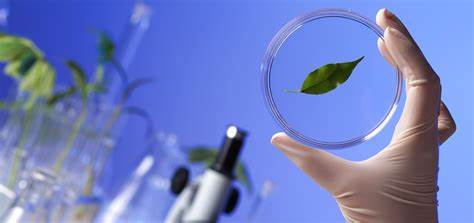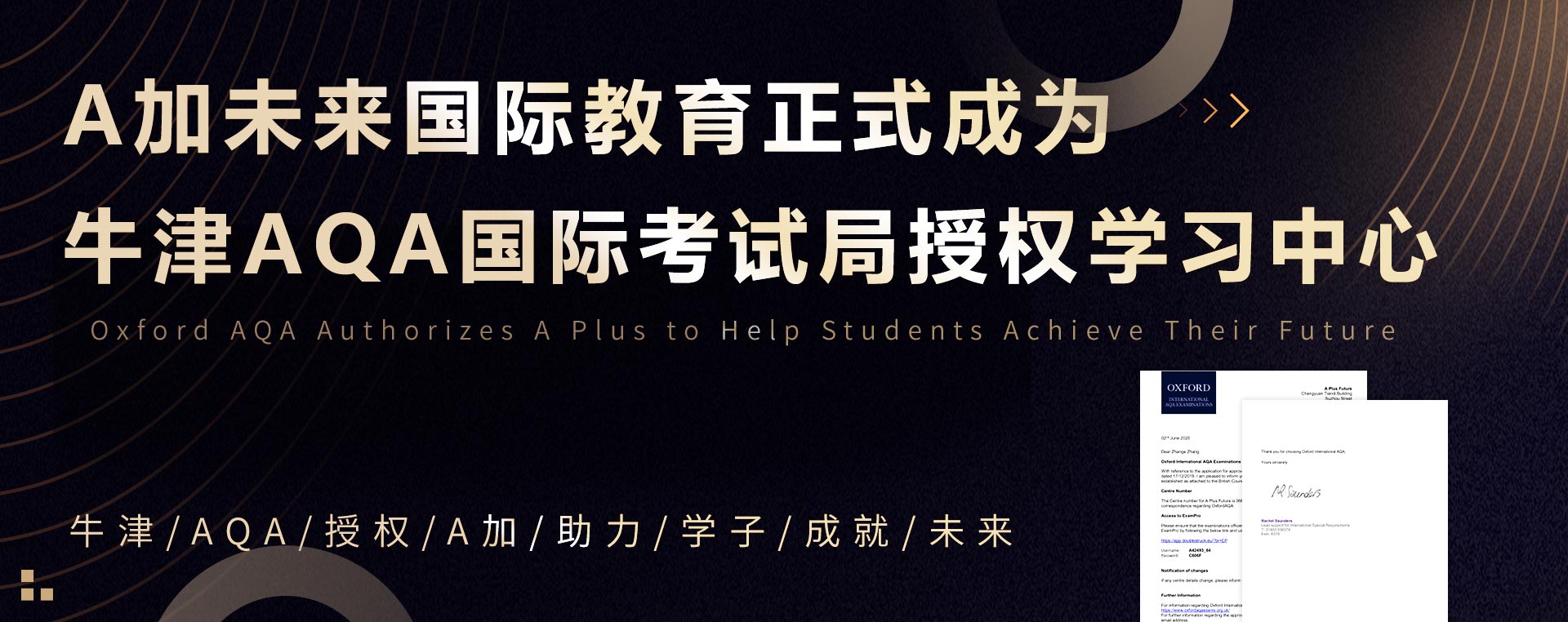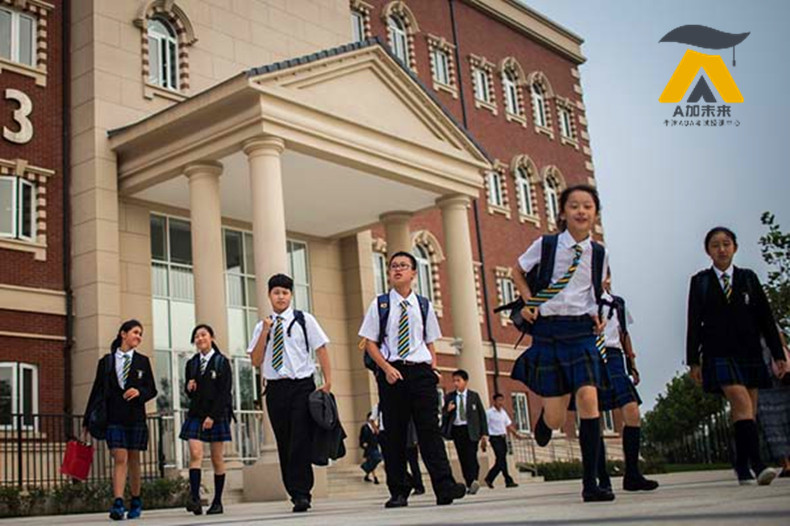部分重要AP生物知识点详解
生物学课程学习中往往会涉及大量知识点概念,这对于很多同学们来说是一个不小的挑战。下面A+国际教育小编就为大家讲解一下在考试中常见的AP生物知识点内容,来帮助同学们做好考前复习工作。

Adaptation适应性改变
Any inherited structure,behavior,or internal process that enables an organism to respond to environmental factors and live to produce offspring is called an adaptation.
Evolution进化
The gradual change in a species through adaptations over time is evolution.
Growth生长
Growth results in an increase in the amount of living meterial and the formation of new structures.
Reproduction繁殖
One of the most obvious of all the characteristics of life is reproduction,the production of offspring.
Species物种
A species is a group of organisms that can interbreed and produce fertile offspring in nature.
Stimulus刺激
Anything in an organism’s external or internal environment that causes the organism to react is AP生物各章重点考前精析_文库下载
Dependent variable因变量
The condition that any changes in it depend on changes made to the independent variable is called dependent variable.
Independent variable自变量
The condition in an experiment that is tested is the independent variable.
Ecology生态学
Ecology is the study of interactions that take place between organisms and their environment.
Ecosystem生态系统
An ecosystem is made up of interacting populations in a biological community and the community’s abiotic factors.
Niche小生境
A niche is all strategies and adaptations a species uses in its environment.
Autotroph自养生物
An organism that uses light energy or energy stored in chamical compounds to make energy-rich compounds is a producer,or autotroph.
Heterotroph异养生物
An organism that cannot make its own food and feeds on other organisms is called a heterotroph.
Food chain食物链
A food chain is a simple model that species use to show how matter and energy move through an ecosystem.In a food chain,nutrients and energy move from autotrophs to heterotrophs and,eventually,to decomposers.
Limiting factor限制因素
A limiting factor is any biotic or abiotic factor that restricts the existence,numbers,reproduction,or distribution of an organisms.
Tolerance耐受性
The ability of an organism to withstand fluctuations in biotic and abiotic environmental factors is known as tolerance.
Primary succesion原生演替
The colonization if barren land by communities of organisms is called primary succesion.
原生演替(primary succession)在完全没有植物的基础上,如海洋上隆起的新岛,火山的溶岩流,新形成的湖沼等地方因植物移居发生的演替
Carrying capacity环境容量
The number of organisms of one species that an environment can support indefinitely is its carrying capacity.
Exponential growth指数增长
Exponential growth means that as a populetion get larger,it also grows at a faster rate.
Biodiversity生物多样性
Biodiversity refers to the variety of species in a specific area.
Endangered species濒危物种
A species is considered to be an endangered species when its numbers become so low that extinctions is possible.
Extinction灭绝
Extinction is the disappearance of a species when the last of its members dies.
Diffusion扩散
Diffusion is the net movement of particles from an area of higher concentration to an area of lower concentration.
Organelle细胞器
With the development of better mocroscopes,scientists observed that all cells contain small,specialized structures called organelles,such as mitochondria,chloroplast and ribosme.
Nucleus细胞核
The central membrane-bound organelle that manages or controls cellular functions is called the nucleus.
Plasma membrane细胞质膜
Plasma membrane is the flexible boundary between the cell and its environment,to allow a steady supply of these nutrients to come into the cell no matter what the external conditions are.
Selective permeability选择通透性
Selective permeability is a process in which a membrane allows some molecules to pass through while keeping others out.选择透过性专指细胞膜上膜蛋白的选择透过作用。如选择K+和N+进入细胞膜
Phospholipid磷脂
A phospholipid has a glyceral backbone,two fatty acid chains,and a pgosphate group.含有一个或多个磷酸基的脂质。是构成细胞膜的主要脂分子
Transport protein转运蛋白
Transport proteins move needed substances or waste materials through the plasma membrane.在叶绿体内膜上有很多运输蛋白选择性转运出入叶绿体的分子。叶绿体内膜上所有转运蛋白的运输作用都是靠浓度梯度驱动的,而不是主动运输。这不仅与细胞质膜的运输蛋白不同,也与线粒体内膜的运输系统不同,在线粒体内膜中也有主动运输的转运蛋白
Chloroplast叶绿体
Chloroplasts are cell organelles that capture light energy and convert it to chemical energy.植物细胞中由双层膜围成,含有叶绿素能进行光合作用的细胞器。间质中悬浮有由膜囊构成的类囊体,内含叶绿体DNA。
Chlorophyll叶绿素
Chlorophyll traps light energy and gives leaves and stems their green color.植物叶绿体内含有卟啉环的主要光合作用色素。可吸收光能用于光合作用
Chromatin染色质
The master set of directions for making proteins is contained in chromatin,which are strands of the genetic naterial,DNA.间期细胞核中由DNA和组蛋白构成的染色物质
Endoplasmic reticulum内质网
One particular organelle in a eukaryotic cell,the endoplasmic reticulum,is the site of cullular chemical reactions.
Mitochondria线粒体
Mitochondria are membrane-bound organelles in plant and animal cells that transform energy for the cell.
真核细胞中由双层高度特化的单位膜围成的细胞器。主要功能是通过氧化磷酸化作用合成ATP,为细胞各种生理活动提供能量。
Ribosome核糖体
Ribosomes are the sites where the cell produces proteins according to the directions of DNA.
一切活细胞(真核细胞、原核细胞)中均有,它是进行蛋白质合成的重要细胞器,主要由RNA和蛋白质构成,其惟一功能是按照mRNA的指令将氨基酸合成蛋白质多肽链,所以核糖体是细胞内蛋白质合成的分子机器。
Active transport主动运输
Movement of materials through a membrane against a concentration gradient is called active transport and requires energy from the cell.指物质逆浓度梯度,在载体的协助下,在能量的作用下运进或运出细胞膜的过程。Na+、K+和Ca2+等离子,都不能自由地通过磷脂双分子层,它们从低浓度一侧运输到高浓度一侧,需要载体蛋白的协助,同时还需要消耗细胞内化学反应所释放的能量。
Passive transport被动运输
Some molecules can pass through the plasma membrane by simple diffusion.The cell uses no energy to move these particles;therefore,this movement of particles across the membrane is classified as passive transport简单扩散①沿浓度梯度(或电化学梯度)扩散;②不需要提供能量;③没有膜蛋白的协助。协助扩散faciliatied diffusion),其运输特点是:①比自由扩散转运速率高;②存在最大转运速率;在一定限度内运输速率同物质浓度成正比。如超过一定限度,浓度再增加,运输也不再增加。因膜上载体蛋白的结合位点已达饱和;③有特异性,即与特定溶质结合。条件:对应所运输物质的蛋白质,顺浓度差。
MITOSIS有丝分裂
A period of nuclear division.Contains prophase,metaphase,anaphase and telophase有纺锤体染色体出现,真核细胞的染色质凝集成染色体、复制的姐妹染色单体在纺锤丝的牵拉下分向两极,从而产生两个染色体数和遗传性相同的子细胞核的一种细胞分裂类型。通常划分为前期、中期、后期和末期。这种分裂方式普遍见于高等动植物,是真核细胞分裂产生体细胞的过程。
Photosynthesis光合作用
The process that uses the sun’s energy to make simple sugars is called photosynthesis.
Electron transport chain电子传递链
The highly energized,or excited,electrons which are transferred from the energy in the sunlight are passed from chlorophyll to an electron transport chain,a series of proteins embedded in the thylakoid membrane.多种递电子体或递氢体按次序排列的连接情况。生物氧化过程中各物质氧化脱下的氢,大多由辅酶接受,这些还原性辅酶的氢在线粒体内膜上经一系列递电子体(或递氢体)形成的连锁链,逐步传送到氧分子而生成水。此种连锁过程与细胞内呼吸过程密切相关。植物的叶绿体中则存在光合电子传递链以传递电子,完成光合作用中水分解出氧,形成NADPH的过程。
Cellular respiration细胞呼吸
The process by which mitochondria break down food molecules to produce ATP is called cellular respiration.There are 3 stages of cellular respiration:glycolysis,the citric acid cycle,and the electron transport chain.The first stage,glycolysis,is anaerobic---no oxygen is required.The last 2 stages are aerobic and require oxygen to be conpleted.
物质在细胞内的氧化分解。氧的消耗和二氧化碳、水及ATP)的生成,根本意义给机体提供可利用的能量。分为有氧呼吸和无氧呼吸
一、有氧呼吸场所:细胞质基质,线粒体
第一:葡萄糖再酶的作用下分解成丙酮酸和还原态的氢[H]和少量的氧气不需要氧气参与,细胞质基质中完成
第二:丙酮酸和水在酶的作用下生成CO2和[H]+少量能量不需要氧气参与,在线粒体基质中完成的
第三(有氧呼吸的重点):[H]和氧气在酶的作用下产生了水,能量
这阶段需要氧气参与,在线粒体内膜上完成
二、无氧呼吸场所:细胞质基质
第一阶段和有氧呼吸第一阶段相同,葡萄糖在酶的作用下分解成丙酮酸和还原态的氢[H]和少量的氧气,不需要氧气参与,在细胞质基质中完成
1、产生乳酸的无氧呼吸方程式:C6H12O6=(酶)2 C3H6O3(乳酸)+少量能量
即葡萄糖在酶的作用下生了乳酸和少量能量
2、产生酒精的无氧呼吸方程式:2 C6H12O6=(酶)2 C2H5OH(酒精)+2CO2+少量能量
即葡萄糖在酶的作用下产生了酒精和二氧化碳
有氧呼吸远大于无氧呼吸,无氧呼吸放出2个ATP
Glycolysis糖酵解
Glycolysis is a series of chemical reactions in the cytoplasm of a cell that break down glucose,a six-carbon compound,into two molecules of pyruvic acid,a three-carbon acid.
糖酵解是指在氧气不足条件下,葡萄糖或糖原分解为乳酸的过程,此过程中伴有少量ATP的生成。这一过程是在细胞质中进行,不需要氧气,每一反应步骤基本都由特异的酶催化
以上这些AP生物知识点要求同学们都能够完全的掌握,这样才能够做好更加充分的准备来应对AP生物考试。如果在AP备考中海油什么疑问,欢迎随时咨询我们的线上老师,让老师一对一为你进行专业的课程辅导吧。
 喜欢 [0]
喜欢 [0] 相关推荐

- 解锁留学双保!1000字指导你留学美国!”
知识点 2024-04-23

- 受疫情影响AP考试取消,出国留学怎么考试?
知识点 2022-06-06

- AP课程解读,考生如何备考?
知识点 2022-06-06

- AP的物理1、物理2和C之间的知识点有什么样的区别
知识点 2021-09-23










